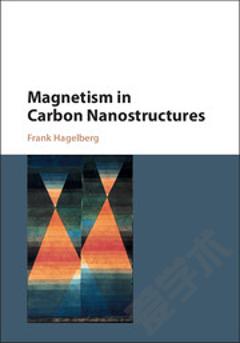Magnetic Anisotropies in Nanostructured Matter
Introduction Preliminary Considerations Parallel, antiparallel, collinear, and noncollinear Characteristic volumina "Classical" spin vectors and spinors The famous spin-orbit interaction Symmetry Considerations Translational invariance Rotational invariance Colloquial or parent lattices Tensorial products of spin and configuration Cell-dependent potentials and exchange fields Magnetic configurations Green's Functions and Multiple Scattering Resolvents and Green's functions The Dyson equation Scaling transformations Integrated density of states Superposition of individual potentials The scattering path operator Angular momentum and partial wave representations Single particle Green's function Symmetry aspects Charge and magnetization densities Changing the orientation of the magnetization Screening transformations The embedded cluster method The Coherent Potential Approximation Configurational averages Restricted ensemble averages The coherent potential approximation The single-site coherent potential approximation Complex lattices and layered systems Remark with respect to systems nanostructured in two dimensions Calculating Magnetic Anisotropy Energies Total energies The magnetic force theorem Magnetic dipole-dipole interactions Exchange and Dzyaloshinskii-Moriya Interactions The free energy and its angular derivatives An intermezzo: classical spin Hamiltonians Relations to relativistic multiple scattering theory The Disordered Local Moment Method (DLM) The relativistic DLM method for layered systems Approximate DLM approaches Spin Dynamics The phenomenological Landau-Lifshitz-Gilbert equation The semiclassical Landau-Lifshitz equation Constrained density functional theory The semiclassical Landau-Lifshitz-Gilbert equation First principles spin dynamics for magnetic systems nanostructured in two dimensions The Multiple Scattering Scheme The quantum mechanical approach Methodological aspects in relation to magnetic anisotropies Physical properties related to magnetic anisotropies Nanostructured in One Dimension: Free and Capped Magnetic Surfaces Reorientation transitions Trilayers, interlayer exchange coupling Temperature dependence A short summary Nanostructured in One Dimension: Spin Valves Interdiffusion at the interfaces Spin valves and noncollinearity Switching energies and the phenomenological Landau-Lifshitz-Gilbert equation Heterojunctions Summary Nanostructured in Two Dimensions: Single Atoms, Finite Clusters, and Wires Finite clusters Finite wires and chains of magnetic atoms Aspects of noncollinearity Nanostructured in Two Dimensions: Nanocontacts, Local Alloys Quantum corrals Magnetic adatoms and surface states Nanocontacts Local alloys Summary A Mesoscopic Excursion: Domain Walls Theory of Electric and Magneto-Optical Properties Linear response theory Kubo equation for independent particles Electric transport-the static limit The Kubo-Greenwood equation Optical transport Electric Properties of Magnetic Nanostructured Matter The bulk anisotropic magnetoresistance (AMR) Current-in-plane (CIP) and the giant magnetoresistance (GMR) Current-perpendicular to the planes of atoms (CPP) Tunneling conditions Spin-valves Heterojunctions Systems nanostructured in two dimensions Domain wall resistivities Summary Magneto-Optical Properties of Magnetic Nanostructured Matter The macroscopic model The importance of the substrate The Kerr effect and interlayer exchange coupling The Kerr effect and magnetic anisotropy energy The Kerr effect in the case of repeated multilayers How surface sensitive is the Kerr effect? Summary Time Dependence Terra incognita Pump-probe experiments Pulsed electric fields Spin currents and torques Instantaneous resolvents and Green's functions Time-dependent multiple scattering Physical effects to be encountered Expectations Afterword Index
{{comment.content}}








 京公网安备 11010802027623号
京公网安备 11010802027623号